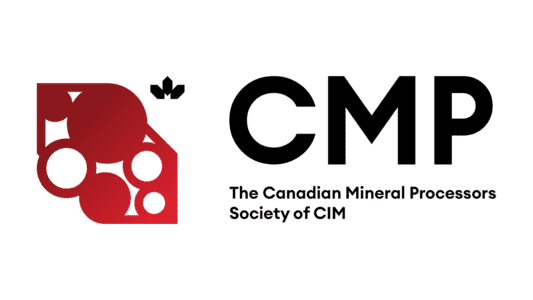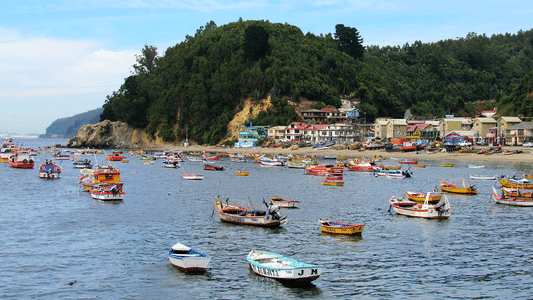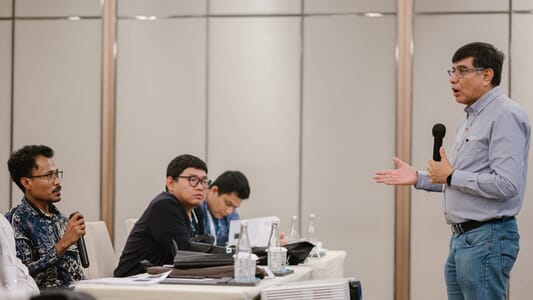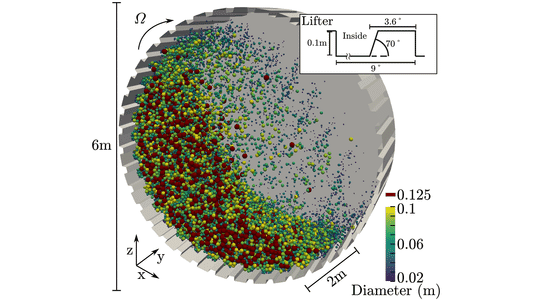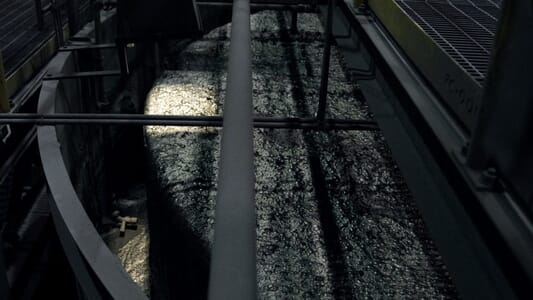Molycop experts Dr Paul Shelley and Dr Yufan Mu unveiled groundbreaking tools at Comminution 2025 to optimise mill performance and grinding media selection. Their work revolutionises decision-making for diverse mining operations, especially in complex, cost-sensitive regions like Africa.
Key Facts
- Dr Paul Shelley showcased an alternative to standard ball wear tests, offering a more predictive and reliable way to evaluate grinding media performance.
- Dr Yufan Mu's research uses unsupervised machine learning to identify distinct mill operating environments, improving efficiency and control strategies.
- The Mill Family Model is particularly valuable for African mines, helping them reduce grinding media costs and adapt to highly variable ore types and water chemistries.
Dr Yufan Mu’s presentation ‘Identification of Different Mill Environments for Semi-Autogenous and Overflowing Ball Mills Using Clustering’ explored the use of unsupervised machine learning – specifically clustering techniques – to identify and categorise distinct operational states within grinding mills. By revealing hidden patterns in performance data, the approach opens up new avenues for enhancing mill efficiency, understanding process variability and optimising control strategies.
Dr Paul Shelley’s presentation ‘Exploring an Alternative to the Marked Ball Wear Test for Evaluating the Abrasion Performance of Grinding Balls’ introduced a more predictive and reliable method for assessing ball wear. The research addresses limitations in traditional wear tests and proposes a new framework for benchmarking grinding media, with the potential to drive more informed decisions around media selection and performance management.
We caught up with Paul and Yufan to find out more about their research.
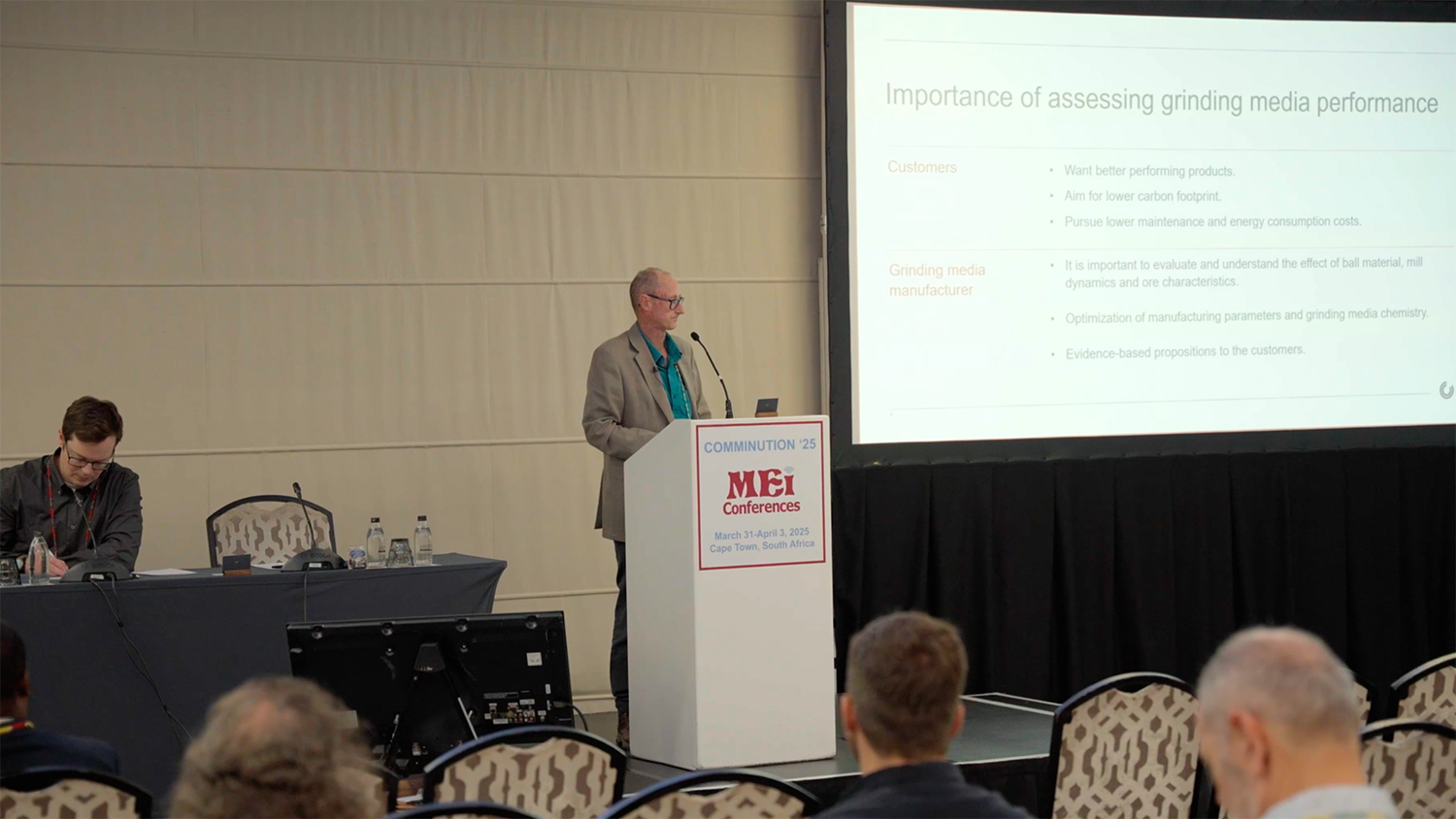 Q&A with Dr Paul Shelley
Q&A with Dr Paul Shelley
Mill environments can vary significantly across regions. Do you see regional differences in Africa that might benefit from clustering-based analysis?
This model can be applied universally. By this we mean the tool can be used by everyone in any milling market. It is particularly suitable for Africa because of the diverse range of metals and minerals that are on that continent. Efficiency gains in media wear, mill power, throughput and recovery are possible by knowing the mineral characteristics, the mill dynamics and then choosing the right media.Because this is a model, we have a lot of flexibility in choosing mill operating parameters. We can 'tune' the family clusters based on the known operating parameters. This is good for diverse market sectors like Africa.
Can this methodology be applied in real-time for dynamic mill control, or is it better suited for offline analysis at this stage?
It is a decision-making tool for better media choice. There is no practical application in real time because we don't change the media in real time. We recommend media is assessed whenever there is a liner change. The model can be used to check if the media is the best choice for the next milling campaign. It will provide answers in minutes once the operating parameters are known.
Are there any limitations or challenges in scaling this approach to different types of operations, such as smaller or remote African sites?
The model is only limited by the availability and choice of the inputs. Knowing the operating parameters is the key. If mineral characteristics or mill dynamics aren’t known, the model will be limited.We noticed that the industry finds it difficult to choose the right SAG ball for various milling operations. This is an opportunity for us to take a lead and use our full toolkit to help miners make good decisions about SAG ball choice. This is perfect for Africa because of the diversity of the operations.
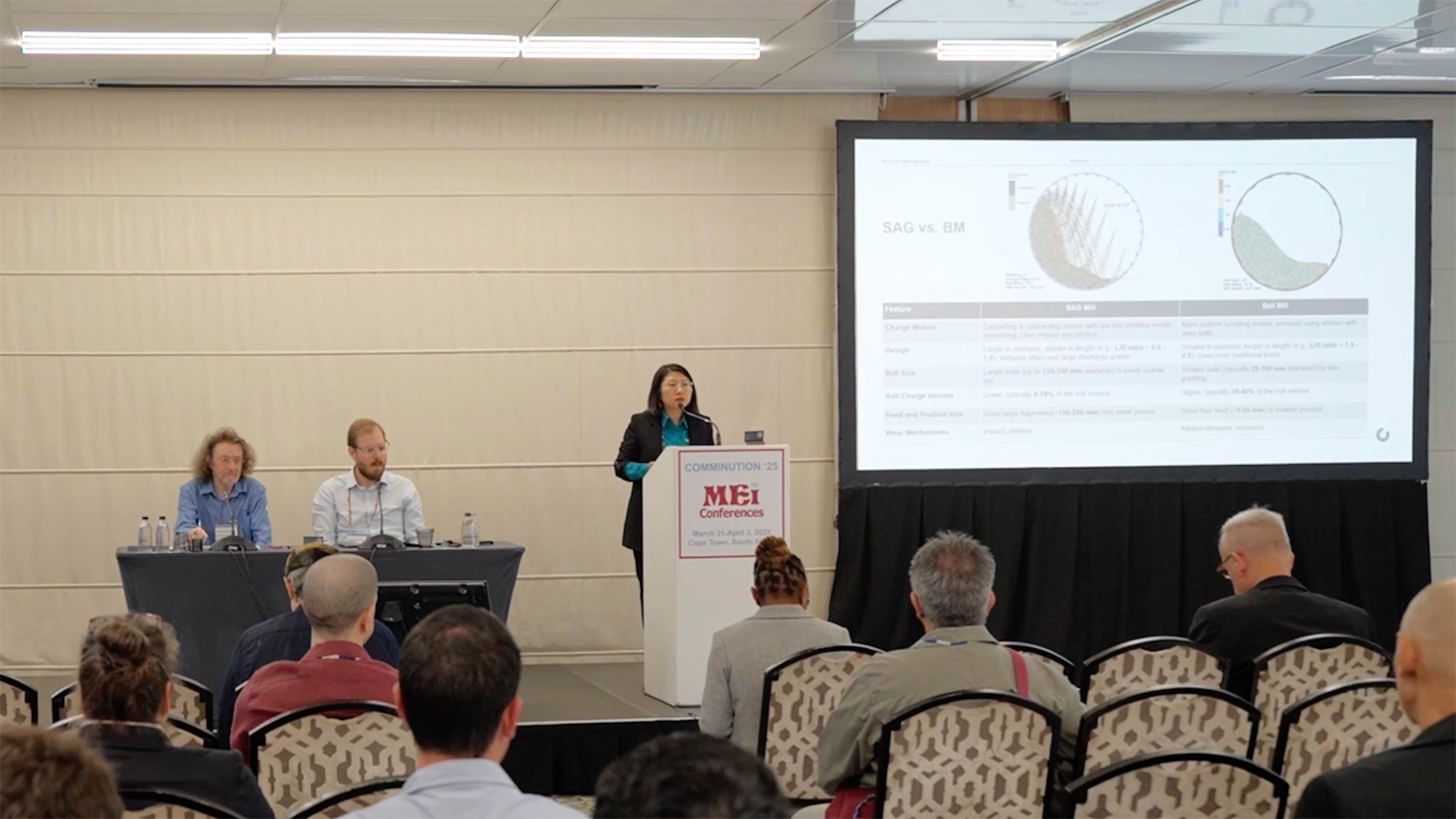 Q&A with Dr Yufan Mu
Q&A with Dr Yufan Mu
Grinding media costs are a major operational factor, especially in African mines with limited margins. How can this new wear evaluation method help operations in the region become more efficient?
Grinding media costs can make up a significant portion of operational expenses, particularly in African mines where profit margins are often tight. This new wear evaluation method, through the Mill Family Model, offers a data-driven approach to help operations become more efficient and cost-effective in several ways:1. Tailored media solution: The model classifies mills into distinct operational clusters based on factors like ore properties, mill design and operating conditions, which enables better alignment of grinding media type to the actual wear environment. This reduces over- or under-specifying media, minimising unnecessary wear. It means less frequent replacement, lower consumption and ultimately lower media spend, which directly impact cost.
2. Fewer trial-and-error campaigns: Instead of relying solely on expensive and time-consuming trial campaigns, sites can leverage model insights to narrow down the best media options from the start, improving decision-making speed and accuracy.
3. Scalability across sites: Especially in regions like Africa with diverse ore bodies and operational constraints, this framework allows replicable strategies across similar mills, helping operations apply best practices without starting from scratch at each site.
For African mines looking to stretch every dollar, this method represents a strategic tool to reduce costs, extend media life and support more sustainable and predictable operations.
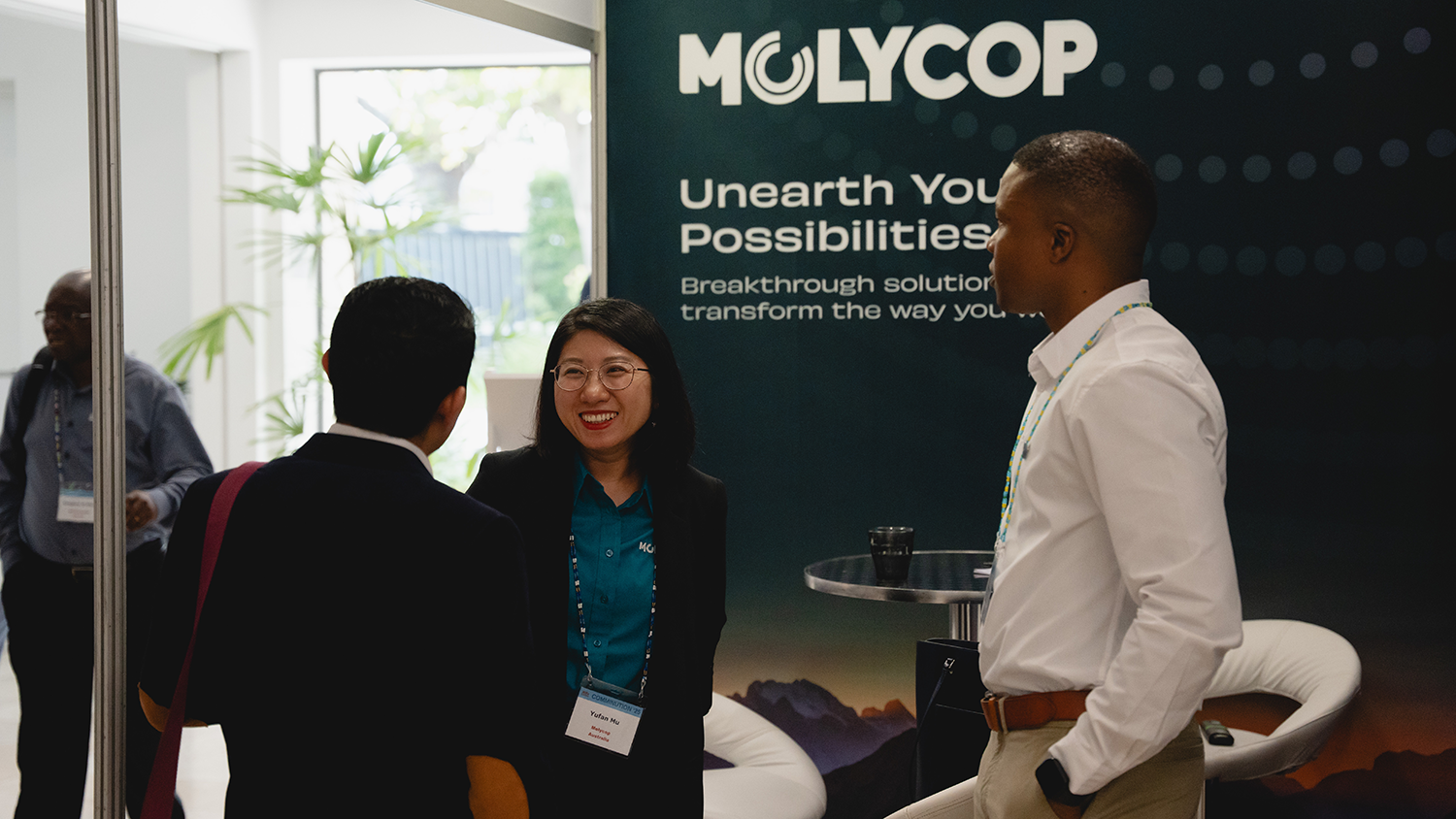 Are there specific ore types or grinding conditions in Africa that make standard wear testing particularly unreliable?
Are there specific ore types or grinding conditions in Africa that make standard wear testing particularly unreliable?
There are several ore types and grinding conditions commonly found in African operations that can make standard wear testing less reliable or representative of actual mill environments:1. Highly variable and complex ore bodies: Many African mines process polymetallic or refractory ores (e.g. Cu-Co, Au-As, or Ni-S ores) with varying hardness, abrasiveness and mineral chemistry. Standard wear tests often assume consistent conditions, which may not capture this variability and lead to misleading results. In regions like Central and West Africa, mines often switch between soft oxide ores and hard sulfide ores. These two ore types result in very different wear mechanisms. Standard lab tests may not reflect the changing conditions when ore blending isn’t practiced consistently.
2. Uncontrolled or variable water chemistry: In many African operations, process water sources vary (e.g. recycled, saline, or acid mine drainage). These water chemistries significantly influence corrosion rates, especially in wet grinding. Standard wear tests rarely replicate such site-specific chemical environments, making the results less predictive of in-mill wear.
3. High variability in mill environment: Due to operational constraints, some mills may be operated at low performing mode, leading to more severe wear patterns. Standard wear tests assume typical load conditions and may not account for this type of high-impact, aggressive environment.
This is exactly where the Mill Family Model can add value. By clustering mills based on real operational data – specific to ore, mill and charge behaviour – it helps bridge the gap between lab testing and actual performance, making wear evaluations more accurate and actionable for African operations.
Could this test method be adapted or simplified for remote mines without lab access?
Yes, the approach behind the Mill Family Model can absolutely be adapted and simplified for remote operations that lack on-site laboratory facilities. While the full methodology involves advanced data analytics and clustering, the core concept understanding the grinding environment to guide media selection can still be applied with a more practical, field-friendly version. Here’s how:1. Use of operational data: The model relies primarily on plant data – such as mill diameter, speed, throughput, ore type, feed size (F80), charge ratio and water chemistry – all of which can usually be obtained from routine plant monitoring systems. This means remote sites can participate without needing lab-scale wear testing.
2. Simplified cluster matching: Once the site provides basic operational and ore information, we can match their mill to an existing cluster in the Mill Family Model. This allows us to recommend grinding media types that have performed well in similar environments, even without detailed wear testing on site.
3. Progressive implementation: Remote sites can start with a baseline recommendation and refine media selection over time by feeding back simple performance data (like wear rate, throughput and energy use), building a site-specific picture without needing in-house lab capabilities.
In short, the Mill Family Model was designed to be scalable and inclusive. It empowers remote operations to make smarter, more efficient grinding media decisions using the data they already have, making it a valuable tool even in the most challenging environments.
